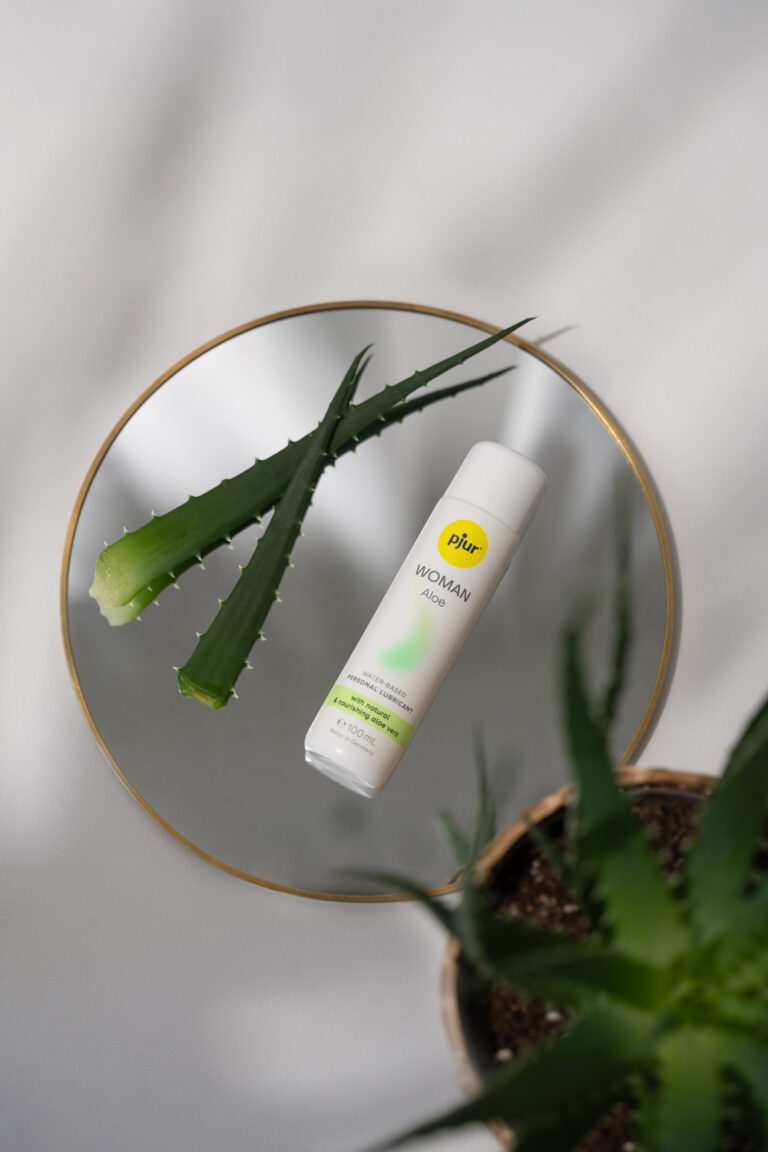Vaginismus – What to Do if You’re Experiencing Vaginal Cramps?
7 February 2024

Do you consistently experience pain when something is inserted into your vagina – whether it be your own finger, your partner’s penis or a tampon? Do you find it impossible to have vaginal intercourse without pain? If so, the reason is not because your vagina is too “tight” as many people mistakenly assume. The reason is much more likely that when something is inserted into your vagina, you experience an involuntary tensing of the muscles. The medical term for this is vaginismus. In this article, we explain what exactly vaginismus is, what causes it, and what you can do to help. However, if you are experiencing symptoms, you should also consult a specialist doctor.
- What actually is vaginismus?
- Primary and secondary vaginismus
- Potential treatment methods for vaginismus
– Psychotherapy
– Relaxation techniques
– Pelvic floor training
– Assistance from your gynecologist
– Habituation training
– Vaginal dilators
What actually is vaginismus?
The use of the term “vaginal cramps” to describe the pain many women experience during penetration – when something is inserted into their vaginas – is actually somewhat misleading. This is because it is not the vagina itself which cramps but the muscles in the pelvic floor. These muscles hang like a hammock in a woman’s pelvic floor and hold the internal organs in place. These muscle contractions – or vaginismus – are actually one of the most common sexual complaints experienced by women. So, if you find that you are experiencing the symptoms described in this article, then you are most definitely not alone.
Primary and secondary vaginismus
When it comes to “vaginal cramps”, there’s a distinction to be made between primary and secondary vaginismus. Experts describe the condition as primary vaginismus if the woman is born with it. Women will often notice that they have primary vaginismus when they first have sex. Secondary vaginismus develops during a woman’s lifetime and is often caused by trauma. This may be trauma as a result of sexual abuse or childbirth. However, infections or inflammations and endometriosis can also be a reason for the development of vaginismus. Often, these muscle contractions are the body’s unconscious defense reflex. Affected women may be worried about pain and injury or are highly anxious that they are simply too “tight”. This then leads to pain during penetration.
The following fears or anxieties can result in vaginismus:
- The fear of penetration itself (due to painful previous experiences)
- The fear of being too “tight”
- Anxiety about becoming pregnant
- Emotional stress
- Depression
- Trauma from childbirth
- Trauma as a result of sexual abuse
- Trauma as a result of painful gynecologist examinations
These are just some of the anxieties which may cause the muscles in women’s intimate areas to cramp, giving rise to pain. This can create a vicious circle that is difficult to break, as sometimes merely thinking that penetration will be painful can result in your body tensing the muscles in your pelvic floor.
Vaginismus is considered a sexual malfunction, and more often than not it is attributable to psychological rather than physical causes. A diagnosis from an expert is necessary to rule out potential physical causes and to be able to find a suitable treatment method for your individual case.

Potential treatment methods for vaginismus
Before assessing potential treatment methods, it’s essential to identify the exact cause for the vaginismus. Only then it is possible to decide on the most appropriate form of treatment. In the case of physical causes, treatment is often more straightforward and quicker. If there is no physical reason behind the condition, this likely means that there are psychological factors that need to be addressed. This involves the individual concerned grappling with their existing anxieties. There are several different treatment options:
Psychotherapy: Psychotherapy begins by addressing the trauma that may be present. Attempts are then made to work through this trauma using approaches from cognitive behavioral therapy for example. The aim is to help develop new thought patterns that prevent pain from occurring during penetration. This may involve one of several different available methods. The approach used will depend on any other psychological stress that the woman is experiencing (such as depression or similar conditions).
Relaxation techniques: Targeted relaxation techniques such as breathing exercises can also help women to overcome vaginal cramping. Moreover, these types of techniques can also contribute to preventing vaginismus from developing altogether.
Pelvic floor training: During pelvic floor training, women practice tensing the muscles in their pelvic floor to prevent incontinence after childbirth for example. The same techniques and exercises can also be applied to help with vaginismus, whereby women actively and consciously relax their muscles as soon as they become aware that these are beginning to tense up.
Assistance from gynecologists: Gynecological specialists can help women suffering from vaginismus by carrying out what is known as a speculum examination. This allows the doctor to determine how flexible the vagina really is. This can aid in reducing anxieties surrounding “tightness” and prevent pain during future penetration.
Habituation training: A similar method that every woman can try at home is habituation training. This involves either inserting your own finger or a suitable aid – such as a vibrator – into your vagina. Gradually, by gently stretching your vagina, you may be able to overcome and prevent any potential anxieties. It’s a good idea to combine habituation training like this with breathing exercises and other techniques you have learned.
Vaginal dilators: Vaginal dilators are another method of treating vaginismus. However, these are only used after any psychological factors have been worked on and relaxation techniques practiced. Then, vaginal dilators can be used, following a training plan issued by a professional. Dilators are available in increasing sizes and are selected and adapted on an individual basis. By applying increasing pressure on the vaginal wall, the aim of dilators is to help the vagina learn to relax rather than tense during penetration. When inserting the dilators, it’s extremely important to use a personal lubricant! And it is only after this form of treatment has been carried out under the supervision of an expert for a while that the use of dilators can then be continued at home.
Please note: Vaginal dilators are usually made of hard plastic or have a silicone-coated surface. Therefore we recommend using a water-based lubricant, as these are gentler on the surface of toys. Alternatively, you could also opt for the specially designed pjur TOY LUBE, which – as the name suggests – has been developed to work specifically with toys and dilators.
In short, if you are experiencing the pain described at the beginning of this article when something is inserted into your vagina, speak to your gynecologist. There are lots of therapeutic options for dealing with vaginismus. Once you’ve identified the best method for you with the support of an expert, you can look forward to enjoying sex again in the future – without pain and without worries!
Image source: AdobeStock_343116075, pexels-maycon-marmo-4346016



